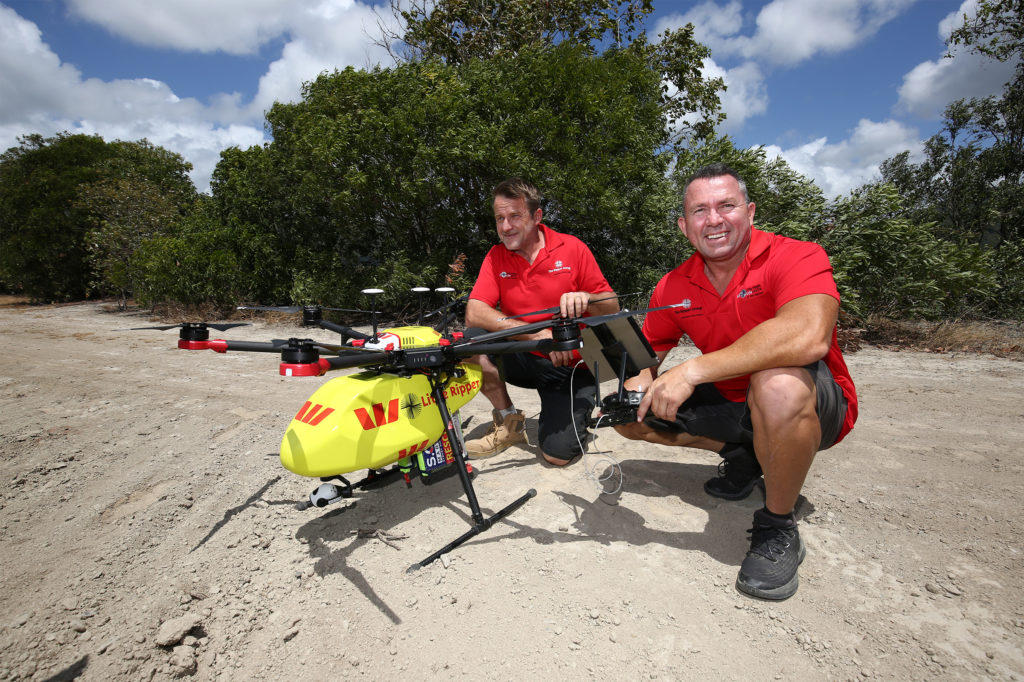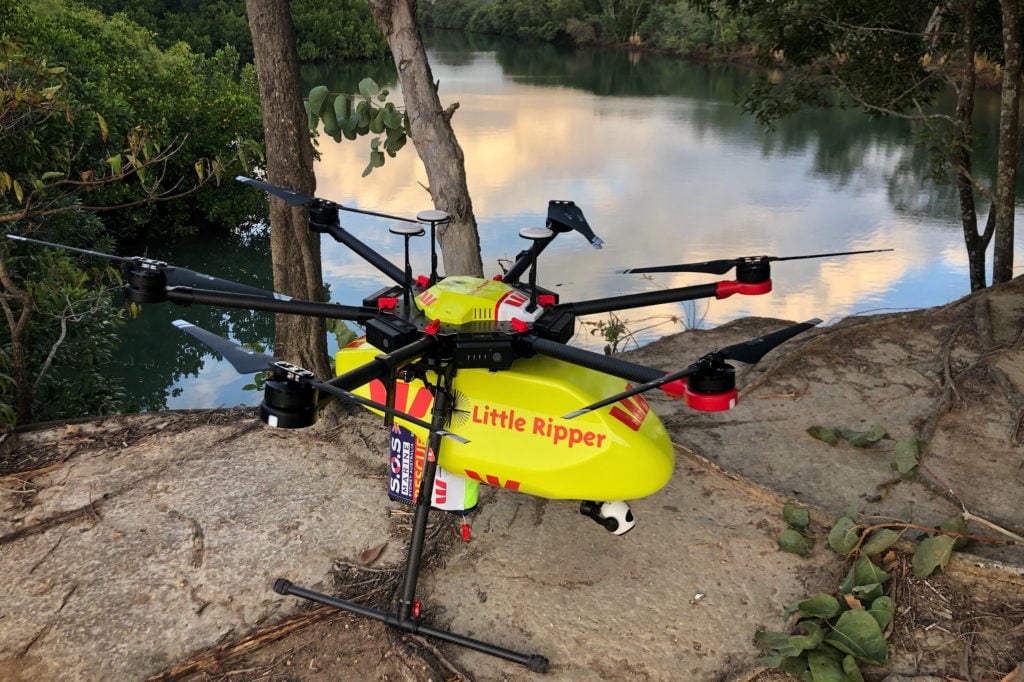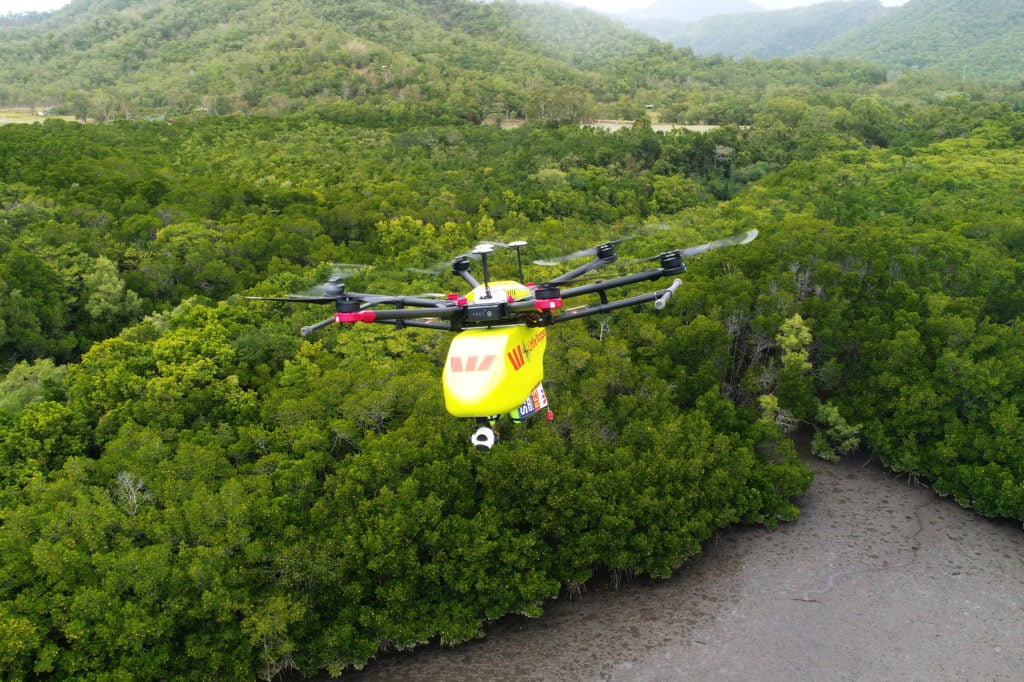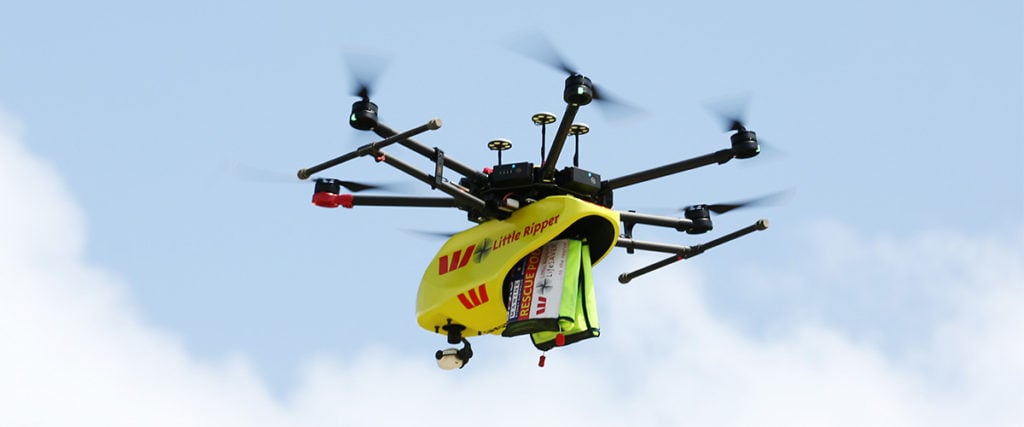Westpac Little Ripper uses AI loaded drones to patrol coastlines, spot sharks and spy on crocodiles. CEO Ben Trollope talks about how their technology is saving lives.
Australia is known for its beautiful beaches – statistics show that 85% of Australians live near one. However, that long, majestic coastline can be a logistical nightmare to patrol, thanks to both its sheer size and the many dangers lurking in its waters. For Kevin Weldon and Paul Scully-Power, co-founders of The Ripper Group, the answer to this problem lies in AI and drone technology deployed through their brainchild – Westpac Little Ripper. Founded in September 2015, the company develops search and rescue drones that monitor beaches, deploying emergency care packages to people in need. Alerting lifeguards to people who need saving, and spotting predators lurking beneath the waters with their pioneering SharkSpotter and CrocSpotter AI algorithms, their drones are already being used countrywide to help rescuers get help to those who need it – fast. Their CEO Ben Trollope talked us through their mission.

Equipped with a high def camera and their award-winning AI technology, The Ripper Group’s drones have the ability to spot predators, sound alarms, communicate with those in trouble and drop anything from flotation devices to defibrillators to those in need below. “Our main focus is providing technology to save people’s lives. We performed the first rescue with a drone in the marine environment, and with over 600 interventions so far, we’ve seen people getting into trouble and quickly moved them out through communication and alarm systems,” says Ben. That award-winning AI technology has been developed in conjunction with the University of Technology, Sydney. “We’ve built our artificial intelligence platform from scratch, and trained it to spot sharks and crocodiles by running approximately 40,000 images of sharks and 6000-8000 images of crocodiles through it. We can spot these in real-time, with over 90% accuracy rate,” he explains. And, given how their AI works, they are now able to deploy that tech to spot other things in the sea. “We continually collect data, and it is being trained to be smarter each time we operate it. We can differentiate between 22 different objects in the marine environment from whales to dolphins, sharks, crocodiles, paddle boarders and surfers. Ultimately, we can train it to do anything we want.”
You might also like AI: Its Possibilities and Its Limits

In essence modified drones sourced from world-leading drone company DJI and named after their sponsors Westpac, The Ripper Group’s flying machines are equipped with swappable technologies called ‘payloads’. “A standard rescue drone for us is a hex-rotor multi-copter. We’ve got a high def 3x zoom camera and run a custom payload delivery system that allows us to chop and change the payloads we carry,” says Ben. This means they can tailor their drones for different types of search and rescue missions, with interchangeable deployables such as defibrillators, heat blankets, location beacons and more. “As a standard for marine operations, we will usually run a 2 or 4 person self-inflating floatation device and a one-way communication and threat alert system that can be as loud as 700 decibels through a wailing speaker. If we need, we can throw up a whole range of different deployables whether it be first aid kits, overnight survival kits or shark deterrent systems for people who we believe are potentially under threat from a shark,” he furthers. “We operate all over the Sydney area and Northern beaches, Port Macquarie, Hastings Council regions and up into the far north coast. We have 200 contracted pilots and 9 full-time pilots flying the drones. They do a 25 to 30-minute flight each time before we swap the batteries out, so if someone has an issue, we can quickly contact the local patrol and have a drone above that person almost immediately.”

As Ben sees it, the use of this technology protects everyone involved in a potential rescue. “Only too often you hear of lifeguards that have become a victim themselves because they’ve gone to the rescue of someone else. Lifesavers, jet skis, IRBs (Inflatable Rescue Boats) are all great tools, but they don’t have that airborne capability and helicopters are expensive and take a long time to activate,” he continues. “It’s always better to get a top-down view than a ground-based view. For us, it’s being able to deliver a floatation device to someone who’s in trouble so that rescuers have the time to make an informed decision. We’ve had a lot of positive feedback and people appreciate the drones being there, but we’ve got to remember we’re in a marine environment, so anything can happen. We’re just another tool in the toolbox.”

Having already made waves in Australia, the company is now working to deploy drones in South Korea, Japan, South Africa, America and Hawaii, and seeking to push their technology further. “We’ve started to develop another AI algorithm for marine events such as triathlons and long-range swims that will count the number of people entering and leaving the water,” explains Ben. “We’ve also tested 5G technology in conjunction with mobile network Telstra, and it will only work wonders for the drone industry with the processing power it will bring. Moving forward, from our perspective, we will continue to develop the technology for the saving of lives, see how that technology evolves, and work out how we can best continue to do our job.”
All photos courtesy of Westpac Little Ripper
For more information about The Ripper Group, please check out their Facebook and Instagram.
Related Articles
Accelerator Brinc Founder Talks About Planting the Seeds of Agtech





